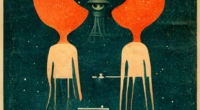The mummies discovered in Venzone, Italy were not found all at once, but rather over time. The oldest mummy dates back to 1348, and the newest to 1881. Locals believed that the mummies were gifts from God meant to protect the town, and they remained known locally for about 300 years. The mummification process was most likely the result of a parasitic mold called “Hipha Bombicina Pers” found in the tomb, combined with the limestone floor. Today, the mummies reside in the churchyard of the Cathedral of St. Andrew the Apostle, with five on display for visitation. However, the precise mummification process remains a mystery, leaving experts with a mystery to unravel.
Mummified Bodies Uncovered In 17th-Century Italy Still Puzzle Scientists.
The accidental mummification of around 40 bodies discovered in Venzone, Italy in the northeast Alps in circa 1647, still continues to baffle experts. Fifteen of these mummies have survived to date and have characteristics that defy explanation. The mummification process was most likely the result of a parasitic mold called “Hipha Bombicina Pers” that was found in the crypt where the mummies were discovered. This mold quickly dehydrates flesh and slows decomposition, which can explain the thin, papery texture of the mummies’ skin. However, it is believed that the limestone floor of the tomb also played a role in the mummification process.
Mummies are not a common discovery, and when they are found, they often make the news. Several examples of unusual mummification discoveries include red food delivery bag mummified bodies in Peru, bog bodies such as Tollund Man in Denmark, and self-mummified Shugendo Buddhist monks in Japan. Recently, an archaeologist also discovered a gold-leaf-covered mummy south of Cairo, Egypt.
The mummies discovered in Venzone are unique in that they were accidental mummies, and not created intentionally like those of ancient Egypt. The mummies were discovered propped against a wall like mannequins, and further discoveries were made when laborers found more mummies while working on a cathedral.
The mummies’ appearances are a result of the natural mummification process, which is believed to have been accidental. The fungus in the crypt caused the dehydration of the flesh and slowed decomposition, leading to the mummification of the bodies. However, scientists still have questions about the precise mummification process, and how it came to pass that so many bodies were naturally mummified in one location.
The mummies’ characteristics are also unusual, with skin that is thin and papery, resembling parchment or papyrus. The mummies of Venzone continue to puzzle scientists, as they try to understand the exact processes that led to their unique preservation.
Subheading
Mummies are a Rarity
Mummies are a rare discovery, and when they are found, it is often due to unusual circumstances. The accidental mummification of 40 bodies in Venzone, Italy, discovered in the 17th century, still remains a mystery to experts. These mummies have unique characteristics that defy explanation, with skin that is thin and papery, almost like parchment or papyrus. Scientists believe that a parasitic mold called “Hipha Bombicina Pers” found in the tomb, combined with the limestone floor, played a role in the mummification process, leading to the natural preservation of the bodies.
The Mysterious Mummies of Venzone
The mummies discovered in Venzone, Italy were not all found at once. The first mummy, named “Gobbo” because of its posture, was found in 1647, and the others were found over time. Locals believed that the mummies were gifts from God meant to protect the town, and they remained known locally for about 300 years.
It wasn’t until the 1950s when an American photographer, Jack Birns, stumbled upon an elderly man drinking tea with his mummy buddy that the world got its first glimpse of the mummies. Birns brokered a photo op deal, and the mummies were propped up for poses and featured in Life Magazine.
However, researchers and the curious had limited time to examine the mummies after the photo op. In 1976, an earthquake hit the region of Venzone, destroying the town and leaving the mummies buried in the rubble. They were later moved to a nearby crypt in the cemetery of the Chapel of San Michele. Today, the mummies reside in the churchyard of the Cathedral of St. Andrew the Apostle, with five on display for visitation.
Interestingly, the mummies date back to different eras, with the oldest dating back to 1348 and the newest to 1881. It is unknown whether those responsible for burying the dead recognized the mummification process and tried to replicate it, but each individual was mummified in the first year after death. A separate chapel, the Chapel of the Rosary, was built over the spot of their original discovery.
Subheading
A Mysterious and Unusual Collection
The mummies of Venzone are a unique collection with an unusual history. Discovered over time and believed by locals to be gifts from God meant to protect the town, these mummies have fascinated researchers and the curious for centuries. Today, they reside in the churchyard of the Cathedral of St. Andrew the Apostle, with five on display for visitation. Visitors to the site may be surprised to learn that the mummies date back to different eras, with the oldest dating back to 1348 and the newest to 1881. The precise mummification process is still unknown, leaving experts with a mystery to unravel.
Don’t miss interesting posts on Famousbio








